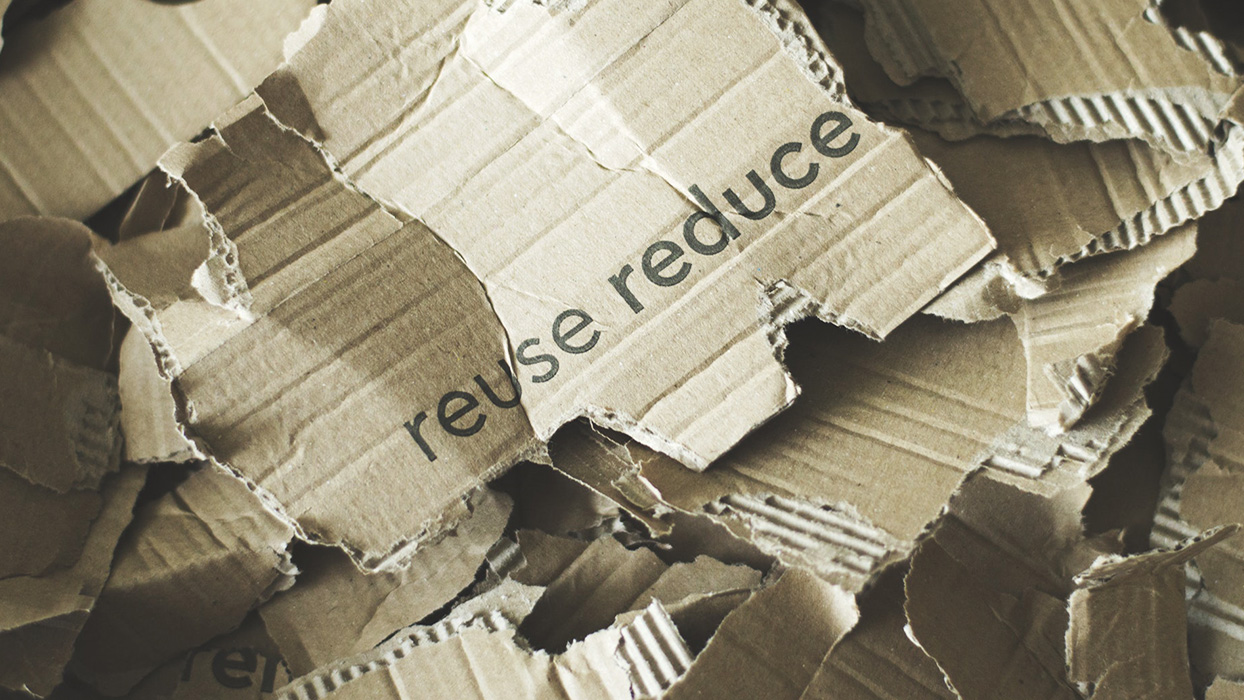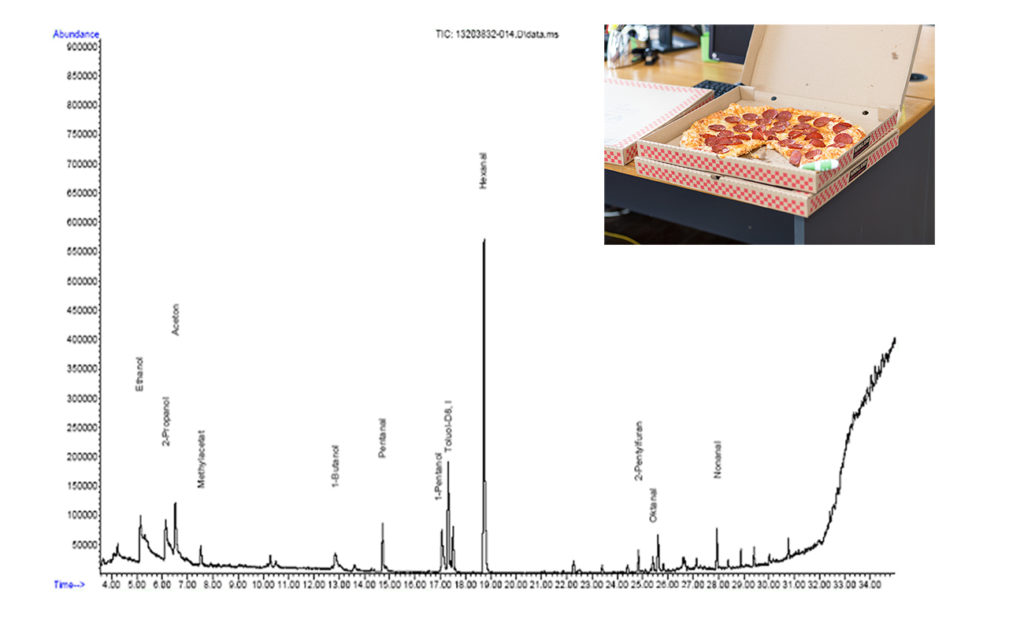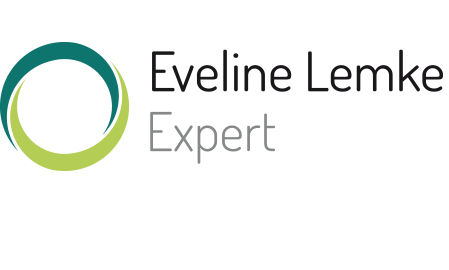
A perspective for the paper industry – Thinking Circular
A delicious, warm pizza, just ordered from the pizza place around the corner and delivered to the office within 30 minutes. The product, delivered in what appears to be an ecologically sound recyclable cardboard box, eases our guilty conscience as regards our carbon footprint. Our mouths water until we ask ourselves where the box has actually come from and whether the pizza actually absorbs the heavy metals from the box like a sponge. Heavy metal pizza instead of salami pizza?
Professor Braungart, chemist and forefather of Greenpeace’s chemistry department, shakes audiences up from international podiums with relentless openness when he invokes the image of the heavy metal pizza. According to his investigations, food packaging made from recycled cellulose and graphic printed matter leads to outgassing, which is facilitated by the condensation in the box and the absorbency of the pizza base. The following illustration demonstrates this.

The packaging industry is aware of the problem and even has solutions at the ready for offering protection from gaseous oil components in packaging materials containing waste paper; an example of this is barrier paper. However, this does not solve the problem for other amalgamations of waste paper. The BDE (Federation of the German Waste, Water and Raw Materials Management Industry) is also aware of the difficulties from the point of view of recyclers. In practice, since 2013, there have repeatedly been various estimates as to the actual quality of recycled paper. The BDE commissioned a study at the Institute for Infrastructure, Water, Resources, Environment (IWARU) in Münster, which shows how moisture and impurities can be reliably determined. Even small-scale recycling companies can now determine the quality of their product with easily reproducible measurement and verification procedures and introduce binding quality assessment procedures with their purchasers. This means that they are then able to comply with the standards for waste paper (EN 643), which have been universally applicable since 2000. CEN, the European standardisation body, is working on consolidating the standards further. What impact does this have on the whole process?
As early as 2011, a study by the German Paper Factories Association showed that 4.6 million tons of residual material are caused by paper recycling processes. A rising waste paper use rate means that the specific proportion of residual material from waste paper in relation to the total quantity of residual material is also clearly increasing. Currently, the rate is 12%. Deinking, i.e. removal of graphical printed matter, which can even lead to long-lasting system damage, is an ongoing practice. The Paper Technology Foundation has worked out that the ratio of graphic waste paper to packaging waste paper in retail waste collected is decreasing. At present, two tons of packaging paper can be produced from one ton of new graphic paper. Getting sufficient yields of valuable deinking products is becoming increasingly more difficult. This is why work is being carried out on refined sorting technology for identifying specific printing processes while sorting graphic paper. With sorting becoming ever more intensive, however, we must also anticipate an improvement in the quality of the waste paper produced in relation to the impurity content. This is also the case if more barrier paper made of virgin fibres enters the material flow. This leads to a disproportionate increase in sorting costs. This then raises the question of future market models or competitive constellations in the waste paper material flow.
It is conceivable that paper production will extend in the direction of Eastern Europe. This is the result of the large sales market for German, Polish and Austrian paper manufacturers in the Czech Republic and a trading hub in Poland. But even this isn’t making strategic decisions any easier for the German paper industry. In addition, a decrease in paper production of 5% by 2020 due to the increasing use of digital media will ramp up the pressure, even if packaging, specialist paper and tissue paper are currently still absorbing this. Total production has remained stable in recent years at around 23 million tons of paper.
What might the future hold for the current successful model for paper recycling in the German waste management industry together with the paper industry? Returning to pizza, we see that the solution is already there: Let’s imagine we were in a position to manufacture edible paper; this would make it possible to enjoy the pizza from the box with a clear conscience but it would also allow the purification industry, which is supposed to purify all human waste with appropriate hygienic paper, to move forward. Not only is edible paper actually possible, it’s been produced for a long time. The vision is a reality. The Cradle-to-Cradle-certified paper has found its main sales market in the Netherlands. It is already stirring up the paper market there. Labelling differentiating the various uses of recycled products would be a prerequisite for separating this type of paper. Otherwise, what happens with barrier paper would also happen here – they would end up being mixed with other recycled products and graphic paper. Anyone wishing to avoid this should consider the principle of separate material flows in accordance with Cradle-to-Cradle. This states that products coming into contact with people or nature, such as pizza boxes, food packaging material or toilet paper, are fed into a separate cycle so that purity is maintained and therefore, no damage is caused to people or nature. Using these types of cellulose means that we could even dispense with water-repellent layers from plastic used as packaging material. Transitioning to Cradle-to-Cradle printing ink could also provide a technical solution to the deinking problem. In any case, the technology is not lacking. What is missing are rules on labelling. And this is where policy is required:
First and foremost is the review of the quality of existing paper. The age of bar codes and RFID technology also makes standardised technical labelling possible. And if recycled paper quality is subject to standardised monitoring, no one need be concerned about a heavy metal pizza. As such, digitalisation certainly doesn’t mean that paper will become digital – but it will remain topical in the sense of Industry 4.0.



No Comments